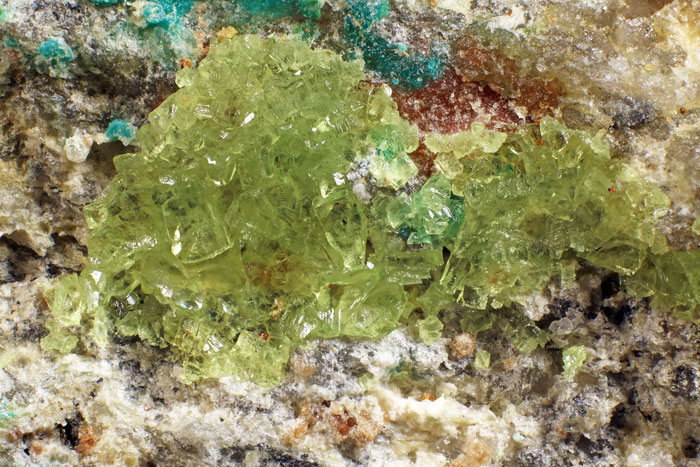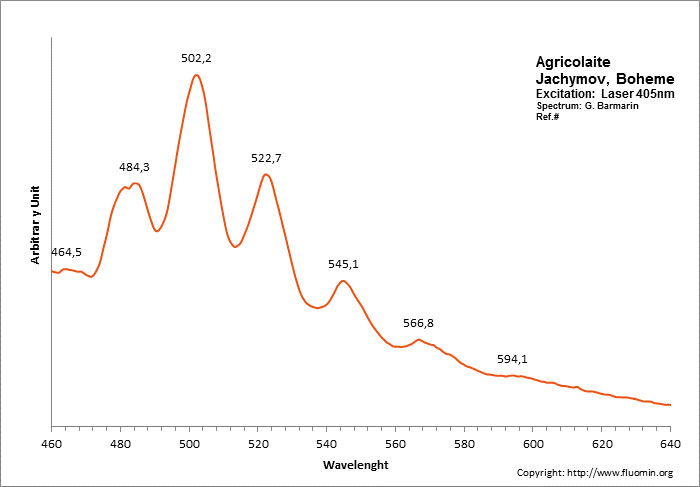Database of luminescent minerals
AGRICOLAITE
Chemical formula: K4(UO2)(CO3)3
Family: Carbonates
Status: IMA-A
Crystal system : Monoclinic
Display mineral: NON
Luminescence:
Longwave UV (365nm) colors: |
Green , | ||
Midwave UV (320nm) colors: |
Green , | ||
Shortwave UV (254nm) colors: |
Green , | ||
Daylight picture

Agricolaite, Jachymov, Czech Republic;
Photo and Copyright: Pavel Skacha, http://Czechmin.cz
Used with permission of the author
Longwave (365nm) picture

Agricolaite undes UVLW, Jachymov, Czech Republic;
Photo: G. Barmarin, Col: Luc Vandenberghe
Pictures Galery:


Do you have a photo of this mineral you would like to see in the gallery? Contact us!
Phosphorescence (in the common sense of the term) observable with the naked eye:
No phosphorescence visible to the naked eye under any type of UV
Comments:
Said to be not fluorescent in the original describing paper, tough, a perfectly determined specimen shows a clear longwave fluorescence with a typical uranyl spectra. Also clearly fluorescent under 405nm pointer laser
Activator(s) and spectrum:
Activator(s): (UO2)2+ (ion Uranyle) intrinsèque ,
Peaks in the spectrum (nm):
(UO2)2+: (464nm) 484 502 523 545 567nm (594nm)

Agricolaite, Jachymov, Czech Republic;
Spectrum: G. Barmarin, Col: Luc Vandenberghe
Best localities for fluorescence (*):
- Rovnost Mine (Werner Mine), Jáchymov (St Joachimsthal), Jáchymov District, Krušné Hory Mts (Erzgebirge), Karlovy Vary Region, Bohemia, Czech Republic;
(*)The data are not exhaustive and are limited to a few remarkable localities for fluorescence
Bibliographic reference for luminescence:
Reference for luminescence on the Internet:
Mineralogical reference on the Internet:
 http://www.mindat.org/show.php?name=Agricolaite
http://www.mindat.org/show.php?name=Agricolaite
 http://webmineral.com/data/Agricolaite.shtml
http://webmineral.com/data/Agricolaite.shtml
Internet Search:
 Image search on 'Google Images'
Image search on 'Google Images'
 Search for documents in all languages on Google
Search for documents in all languages on Google
A request providing no result means only that no such reference exists in the database, but it does not mean that what you are looking for does not exist, just not to our knowledge. If you think you have found an error or omission, please let us know via the contact page being sure to cite the source of information.

